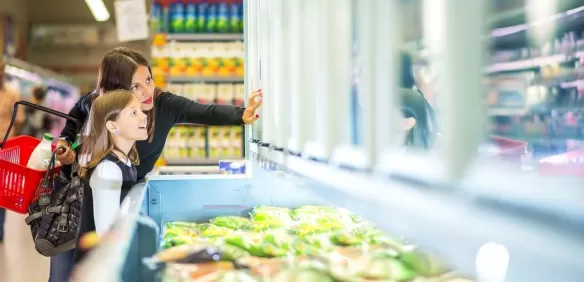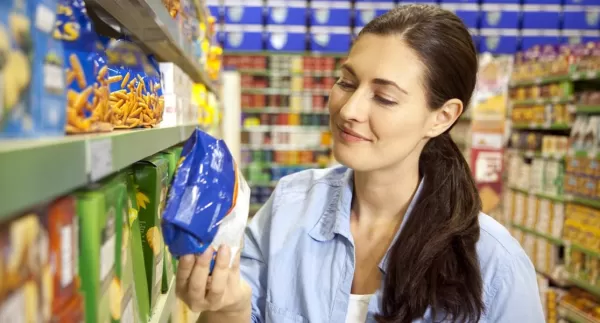
What modified atmosphere for the conservation of prepared meals, catering products and vegetable protein-based products?
Modified atmosphere packaging is a very widespread technique in the food industry. It applies to a wide variety of products: prepared meals, catering products and vegetable protein-based products included.
The market for prepared, catered or plant-based protein meals is booming. To meet the expectations of “ready-to-eat” consumers, the market for catering products is constantly being renewed by the establishment of new specialised stores and points of sale, sometimes accessible 24 hours a day (fast food, large-scale distribution, vending machines). ).
Eat quickly yes, but above all eat better.
Recipes are also evolving! The elimination of food additives, fewer ingredients and preservatives and the proposal of new recipes based on vegetable proteins, which are increasingly fashionable, make this sector a very dynamic segment.
Improving product preservation through modified atmosphere packaging.
Modified atmosphere packaging (MAP, Modified Atmosphere Packaging) uses natural components of air (mainly: nitrogen, carbon dioxide, oxygen). It has many advantages:
- the extension of DLC,
- respect for the organoleptic, nutritional and taste qualities of the products,
- maintaining attractive packaging.
What are the characteristics of catering products and prepared meals.
Most catering products, dishes prepared with meat, fish, vegetables or vegetable proteins are called “intermediate humidity”, characterised by a water content between 12% and 65%. They are then very sensitive to microbial development, particularly bacterial.
Sometimes rich in fat, they are predisposed to going rancid because they are sensitive to oxidation in the presence of oxygen in the air.
Which gas to increase the shelf life of prepared meals, catering products, and vegetable protein-based products?
Mixtures intended for modified atmosphere packaging of these foods must necessarily contain carbon dioxide (CO2). This is in fact called bacteriostatic and fungistatic, that is to say it slows down the growth of microorganisms.
A minimum value of 20% CO2 in the protective atmosphere is necessary to ensure this bacteria-inhibiting effect and significantly extend the shelf life of food.
Its use pure or in very high doses is not systematic, because it can cause the packaging to shrink significantly or impart a slightly acidic taste (products with a high fat content). Nitrogen is chemically neutral. It complements carbon dioxide to protect the product against oxidation. It also ensures a “cushion” effect in the packaging, preventing the product from being crushed.
For all these types of products, the gas mixtures used are therefore mainly mixtures with 20% to 50% CO2 in nitrogen.
The shelf life that we can expect for these products is 2 to 3 times longer than in air.
Sandwiches, pies, pizzas and more
| PRODUCT | MIXTURE | TEMPERATURE | TIME OF CONSERVATION * | ||
|---|---|---|---|---|---|
| N2 | CO2 | Ar | |||
|
Sandwich with raw veg |
50% 70% 50% 70% |
50% 30% 20% 50% 30% 20% |
80% 80% |
4°C |
About 8 days About 8 days About 8 days About 20 days About 20 days About 20 days |
| Cheese & Ham toasties | 50% | 50% | 4°C | 15 days | |
| Pizzas | 50% | 50% | 4°C | 15-21 days | |
| Quiche | 50% | 50% | 4°C | 15-21 days | |
| Various pies | 50% | 50% | 4°C | 15-21 days | |
| Pies | 50% | 50% | 4°C | 15-21 days | |
| Volovants | 50% | 50% | 4°C | 15 days | |
| Ham croissant | 50% | 50% | 4°C | 21 days | |
| Glazed ham | 50% | 50% | 4°C | 21 days | |
| Sausage rolls | 50% | 50% | 4°C | 21 days | |
| Pie | 50% | 50% | 4°C | 21 days | |
* DLCs are given for information only
Catering products
| PRODUCT | MIXTURE | TEMPERATURE | TIME OF CONSERVATION * | |
|---|---|---|---|---|
| N2 | CO2 | |||
| Prepared salads | 50% | 50% | 4°C | 15 days |
|
Cous cous |
or 80% |
or 20% |
4°C 4°C |
6 days |
| Fresh pasta | ||||
| Unfilled filled (gnocchi, lasagna ravioli, tortellini) |
70% 50% or 70% |
30% 50% or 30% |
4°C 4°C |
21 days 15-21 days |
| Dumplings | 50% | 50% | 4°C | 21 days |
| Crepes | 50% | 50% | 4°C | 21 days |
| Cooked sausage | 50% | 50% | 4°C | 21 days |
| 100% | 4°C | 21 days | ||
| Chinese food | ||||
| (beignets, spring rolls) | 50% | 50% | 4°C | 21 days |
| Snails | 50% | 50% | 4°C | 15-20 days |
* DLCs are given for information only
The conditions for successful modified atmosphere packaging require using the appropriate atmosphere for the right product. It is also necessary to select the right packaging film and correctly configure the packaging machine. It is essential to start with a product with impeccable hygiene to be able to preserve its initial qualities for a long period, and essential to maintain it at the right cold temperatures of +4°C, throughout its storage period.
Experts at your side
Our food industry experts are at your service to support you in your protective atmosphere packaging project. The gases and gas mixtures offered belong to our food grade gases range. Finely tuned and carefully controlled, they are the origin of MAP and were developed to meet the specific needs of pre-packaged fresh foods.
Do you have questions about your gas installation? Please fill out our contact form.
Our experts will respond to you within 24 hours
Frequently asked questions
How to increase the shelf life of products?
What does “packaged in a protective atmosphere” mean on certain food packaging labels?
What are the different packaging machines for M.A.P?
What installation do I need to use gas?
What modified atmosphere for the conservation of fresh meats?
What modified atmosphere for bakery products?
What modified atmosphere for the conservation of seafood products?
What modified atmosphere for the conservation of cheese and dairy products?
What modified atmosphere for dry products?
What modified atmosphere for the conservation of prepared fruits and vegetables?
